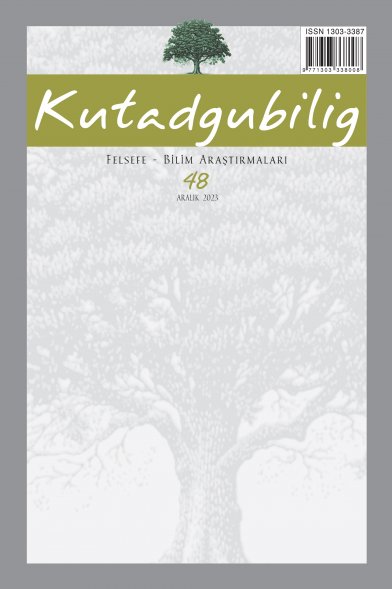GECE GÖĞÜ NEDEN KARANLIKTIR: CHESEAUX’NUN İLK KANTİTATİF ÇÖZÜM DENEMESİ
WHY THE NIGHT SKY IS DARK: CHESEAUX’S FIRST QUANTITATIVE SOLUTION ATTEMPT
___
Benn, Chris R. & Ellison, Sara L., La Palma Night-Sky Brightness, New Astronomy Reviews, Vol. 42, Issues 6-8, 1998de Chéseaux, Jean-Philippe Loys, Traité de la comete, qui a paru en Decembre 1743 & en Janvier, Fevrier & Mars 1744, Marc-Michel Bousquet & Compagnie, Lozan, 1744
Copernicus, Nicolaus, Göksel Kürelerin Devinimi Üzerine, Çev. C. Cengiz Çevik, Türkiye İş Bankası Kültür Yayınları, İstanbul, 2010
Danielson, Dennis, The Book Of The Cosmos: Imagining The Universe From Heraclitus To Hawking, Basic Books, New York, 2000
Digges, Thomas, A Perfit Description of Caelestiall Orbes, A Prognostication Everlasting, Londra, 1576
Freely, John, Galileo’dan Önce Ortaçağ Avrupa'sında Modern Bilimin Doğuşu, Çev. Muhtesim Güvenç, Kolektif Kitap, İstanbul, 2014
Grant, Edward, Planets, Stars, and Orbs: The Medieval Cosmos, 1200-1687, Cambridge University Press, New York, 1996
von Guericke, Otto, The New (So-Colled) Magdeburg Experiments of Otto Von Guericke, Springer Scince+Business Media, B. V., Dordrecht, 1994
Halley, Edmond, The Philosophical Transactions of The Royal Society of London cilt VI içinde, C. and R. Baldwin, Londra, 1809
Harrison, Edward, Cosmology: The Science of the Universe (Second Ed.), Cambridge University Press, Cambridge, 2000
Hoskin, Michael, Dark Skies and Fixed Stars, Journal of the British Astronomical Association, Vol. 83, 1973
http://vizier.u-strasbg.fr/viz-bin/VizieR?-source=V/70A
http://www.atlasoftheuniverse.com/nearstar.html
Ingham, M.F., The Spectrum of the Airglow, Scientific American, Vol. 26, No. 1, 1972
Kepler, Johannes, KEPLER: Kepler's Conversation with Galileo's Sidereal Messenger, Translated and Edited by Edward Rosen, Johnson Reprint Corporation, New York, 1965
Koyré, Alexande, From the Closed World To The Infinite Universe, J. H. Furst Company, Baltimore, 1957
Maor, Eli, To Infinity and Beyond: A Cultural History of the Infinite, Princeton University Press, New Jersey, 1991
Munitz, Milton K., Theories of the Universe, The Free Press, New York, 1965
Struve, Otto, Review of The Universe at Large, Physics Today, Vol. 14, No. 4, 1961
- ISSN: 1303-3387
- Yayın Aralığı: 2
- Başlangıç: 2002
- Yayıncı: Dergah Yayınları A.Ş.
TARİH ÜZERİNE BIR SORUŞTURMA: TARİH Mİ İNSAN İÇİNDIR, İNSAN MI TARİH İÇİNDİR?
HAZ ARAYIŞINA KARŞI YAŞAMA İÇGÜDÜSÜ
DİJİTAL ÇAĞDA HÜMANİZM TARTIŞMALARI AÇISINDAN İNSAN DOĞASI BİYOTEKNOLOJİ VE BİYOPOLİTİKA
STOACI RUH ÖĞRETİSİ BAĞLAMINDA DUYGU VE AKIL İLİŞKİSİ
GECE GÖĞÜ NEDEN KARANLIKTIR: CHESEAUX’NUN İLK KANTİTATİF ÇÖZÜM DENEMESİ
YÖNSÜZLEŞMİŞ SAVAŞLAR POLİTİK FELSEFENİN BİR SINIR MESELESİ OLARAK SAVAŞA DAİR
CARL SCHMITT: POLITIK-OLAN, EGEMENLIK VE ULUSLARARASI HUKUK
